Assigned to the 86th Light Bombardment Squadron of the 47th Bombardment Group, he departed for the North African Theater of Operations (Tunisia) as a flight commander in October 1942. There he led his flight of
(begin quote from:)A-20s
on extremely hazardous, low-level missions against German tanks, convoys, troop concentrations, bridges, airfields, and a variety of other tactical targets.
Douglas A-20 Havoc
(Redirected from A-20 Boston)
| A-20 Havoc DB-7/Boston/P-70 |
|
|---|---|
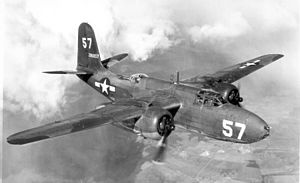 |
|
| A-20G of the United States Army Air Forces | |
| Role | Light bomber |
| Manufacturer | Douglas Aircraft Company |
| Designer | Ed Heinemann |
| First flight | 23 January 1939 |
| Introduction | 10 January 1941 |
| Retired | (USAF) 1949 |
| Status | Retired |
| Primary users | United States Army Air Forces Soviet Air Force Royal Air Force French Air Force |
| Produced | 1939–1944 |
| Number built | 7,478 |
| Developed into | Douglas DC-5 |
It served with several Allied air forces, principally the United States Army Air Forces (USAAF), the Soviet Air Forces (VVS), Soviet Naval Aviation (AVMF), and the Royal Air Force (RAF) of the United Kingdom. Soviet units received more than one in three (2,908 aircraft) of the DB-7s ultimately built.
It was also used by the air forces of Australia, South Africa, France, and the Netherlands during the war, and by Brazil afterwards.[1]
In British Commonwealth air forces, bomber/attack variants of the DB-7 were usually known by the service name Boston, while night fighter and intruder variants were usually known as Havoc. An exception to this was the Royal Australian Air Force, which referred to all variants of the DB-7 by the name Boston.[2] The USAAF referred to night fighter variants as P-70.
Contents
Design and development
In March 1937, a design team headed by Donald Douglas, Jack Northrop, and Ed Heinemann produced a proposal for a light bomber powered by a pair of 450 hp (336 kW) Pratt & Whitney R-985 Wasp Junior radial engines mounted on a shoulder wing.[3]It was estimated that it could carry a 1,000 lb (454 kg) bomb load at 250 mph (400 km/h). Reports of aircraft performance from the Spanish Civil War indicated that this design would be seriously underpowered, and it was subsequently cancelled.
A-20A
The model attracted the attention of a French Purchasing Commission visiting the United States seeking aircraft for the modernization of the Armee de l'Air in the wake of the Munich Crisis. The French discreetly participated in the flight trials, so as not to attract criticism from American isolationists. The Air Corps, which controlled the aircraft's development, but had been excluded from negotiations between the French, the Production Division, and the Navy's Bureau of Aeronautics, was directed by the White House on 19 January 1939 to release the DB-7 for assessment in contradiction of its own regulations. The "secret" was revealed when the Model 7B crashed on 23 January while demonstrating single-engine performance. The French were still impressed enough to order 100 production aircraft, with the order increased to 270 when the war began. Sixteen of those had been ordered by Belgium for its Aviation Militaire.
Although not the fastest or longest-range aircraft in its class, the Douglas DB-7 series distinguished itself as a tough, dependable combat aircraft with an excelente reputation for speed and maneuverability. In a report to the British Aeroplane and Armament Experimental Establishment (AAEE) at RAF Boscombe Down, test pilots summed it up as: "has no vices and is very easy to take off and land ... The aeroplane represents a definite advantage in the design of flying controls ... extremely pleasant to fly and manoeuvre."[4] Ex-pilots often consider it their favorite aircraft of the war due to the ability to toss it around like a fighter.[5] The Douglas bomber/night fighter was found to be extremely adaptable and found a role in every combat theater of the war, and excelled as a true "pilot's aeroplane".[6]
When DB-7 series production finally ended on 20 September 1944, a total of 7,098 had been built by Douglas and a further 380 by Boeing. As a proof of American excellence in más production Douglas redesigned its Santa Monica plant to create a mechanized production line to produce A-20 Havocs. The assembly line was over a mile long (6,100 feet), but by looping back and forth, fitted into a building that was only 700 feet long. Man-hours were reduced by 50% for some operations. Production tripled.[7]
Operational history
Douglas A-20J-10-DO, 43-10129, of the 416th Bomb Group destroyed by flak over Beauvoir, France on 12 May 1944.
France
The French order called for substantial modifications to meet French standards, resulting in the DB-7 (for Douglas Bomber 7) variant. It had a narrower, deeper fuselage, 1,000 hp (746 kW) Pratt & Whitney R-1830-SC3-G radials, French-built guns, and metric instruments. Midway through the delivery phase, engines were switched to 1,100 hp (820 kW) Pratt & Whitney R-1830-S3C4-G. The French designation was DB-7 B-3 (the B-3 signifying "three-seat bomber").The DB-7s were shipped in sections to Casablanca for assembly and service in France and French North Africa. When the Germans attacked France and the Low Countries on 10 May 1940, the 64 available DB-7s were deployed against the advancing Germans. Before the armistice surviving planes were evacuated to North Africa to avoid capture. Here, they fell under control of the Vichy government and briefly engaged the Allies during Operation Torch the Allied invasion of French North Africa in November 1942.
After French forces in North Africa had sided with the Allies, DB-7s were used as trainers and were replaced in its experienced units by Martin B-26 Marauders to serve as front lime escuadrilles. Free French I/120 Lorraine, under RAF control, was based in England and re-equipped in 1943 with Boston IIIAs, later with Boston IVs. It was part of Second Tactical Air Force and carried out numerous raids against targets in mainland Europe.[8]
In early 1945, a few DB-7s were moved to mainland France, where they saw action against the remaining isolated German pockets on the western coast.
British Commonwealth
After the fall of France, there were still a substantial number of DB-7s which had not yet been delivered to the Armee de l'Air. The remainder of the order which was to have been delivered to France was instead taken up by the UK via the British Purchasing Commission. In the course of the war, 24 squadrons operated the Boston. They saw action in Mediterranean and North Africa.The French had originally intended to use the DB-7 as a short-range tactical attack aircraft, but its range was too short for the RAF to be able to use them as light bombers against German targets in Europe. But RAF was in desperate need of any aircraft suitable for night fighting and intruder duties. The type saw its first active operations with the RAF in early 1941, when 181 Boston IIs began to be deployed in night fighter and intruder roles.[9] There were two basic versions of the Havoc I, an Intruder version (glazed nose, five 0.30-inch machine guns and 2.400 pounds of bombs) and a Night Fighter version (AI Mk.IV radar and eight 0.30-inch machine guns).
Some Havocs were converted to Turbinlite aircraft which replaced the nose position with a powerful searchlight. The Turbinlite aircraft would be brought onto an enemy fighter by ground radar control. The onboard radar operator would then direct the pilot until he could illuminate the enemy. At that point a Hawker Hurricane fighter accompanying the Turbinlite aircraft would make the attack.[10] The Turbinlite squadrons were disbanded in early 1943.[11]
All the French DB-7As, improved DB-7 version, were delivered to the RAF, where there were given the name Havoc II and converted to night fighter role. Eventually British Purchasing Commission ordered a British version that was designated DB-7B, RAF named it Boston III. The Boston III was the first to operate with the RAF as light bomber. They were supplied to Squadrons in the United Kingdom and Middle East(later moved to bases in Italy) replacing Bristol Blenheims. Their first raid took place on February 1942. Many Boston III were modified to Turbinlite or Intruder planes.
Soviet Union
Through Lend-Lease, Soviet forces received more than two-thirds of the A-20B variant manufactured and a significant portion of G and H variants. The A-20 was the most numerous foreign aircraft in the Soviet bomber inventory. The Soviet Air Force had more A-20s than the USAAF.[12]They were delivered via the ALSIB (Alaska-Siberia) air ferry route. The aircraft had its baptism of fire at the end of June 1942. The Soviets were dissatisfied with the four .30-calibre Browning machine guns, capable of 600 rounds per gun per minute, and replaced them with the faster-firing, 7.62 mm (0.300 in) calibre ShKAS, capable of up to 1,800 rounds per gun per minute. During the summer of 1942, the Bostons flew ultra-low-level raids against German convoys heavily protected by flak. Attacks were made from altitudes as low as 33 ft (10 metres) and the air regiments suffered heavy losses.[12]
By mid-1943 Soviet pilots were very familiar with the A-20B and A-20C. The general opinion was that the aircraft was overpowered and therefore fast and agile. It could make steep turns of up to 65° angle, while the tricycle landing gear made for easier take-offs and landings. The type could be flown even by crews with minimal training. The engines were reliable but sensitive to low temperatures, so the Soviet engineers developed special covers for keeping propeller hubs from freezing up.[13]
Some of these aircraft were armed with fixed-forward cannons and found some success in the ground attack role.[14]
By the end of the war, 3,414 A-20s had been delivered to the USSR, 2,771 of which were used by the Soviet Air Force.[12]
Netherlands
In October 1941 the Netherlands government in exile ordered 48 DB-7C planes for use in the Dutch East Indies. Delivery had been scheduled for May of 1942 but because of the desperate situation US government agreed to divert 32 DB-7B Boston III aircraft to the Dutch East Indies in advance.[15]The first 6 were delivered by ship in February 1942. Only one aircraft was assembled in time to take part in the action. The Japanese captured the remaining aircraft of the delivery, and at least one was repaired and later tested by the Japanese Army.
Australia
The next 22 DB-7Bs to be delivered to East Indias were diverted to the Royal Australian Air Force.[16] They served with No. 22 Squadron RAAF and fought in the East Indies from September 1942. RAAF Bostons took part in the Battle of the Bismarck Sea and in attacks on a large Japanese convoy headed toward Lae.Some A-20A/C/G planes arrived from the USA from September 1943. By November 1944, No 22 Squadron was going to be assigned to the Philippines. 13 Bostons were destroyed on the ground during a Japanese raid on Morotai. The squadron was withdrawn to Noemfoor, where it was re-equipped with Beaufighters before it returned to action.[17] Surviving Bostons were relegated to transport, mail delivery and communications.
United States
In 1940, the US military's indifference to the type was overcome by improvements made for the French and British Commonwealth air forces.The USAAC was impressed enough by the A-20A's high power to weight ratio and easy handling characteristics. Two variants were ordered, in a tranche of more than 200 aircraft: the A-20 for high-altitude daylight bombing and the A-20A for low- and medium-altitude missions. It was intended that the high-altitude variant would be fitted with turbosupercharged Wright R-2600-7 engines; after a prototype suffered technical problems, the USAAC changed its order and an initial shipment of 123 A-20As (with less-powerful R-2600-3 engines) and 20 A-20s (R-2600-11) entered service in early 1941. A further 59 aircraft from this first order were received as P-70 night fighters, with two-stage supercharged R-2600-11 engines.
The A-20B, another high-altitude bomber variant – lacking heavy armor and self-sealing fuel tanks – received a significant order from the USAAC: 999 aircraft (although two-thirds of these were exported to the USSR). With the lessons of the Pacific in mind USAAF ordered A-20G in June 1942.
Pacific
A major shipment of DB-73s originally destined for France was retained by the US government and converted to A-20C/G attack configuration. The USAAF received 356, most of which were operated by the 5th Air Force in the South West Pacific theater.[18] When the war started 27th Bombardment Group (minus its A-20As) was in the process of being sent to the Philippines where it was to have been re-established as an A-20 unit, but the first operational unit in actual combat was the 89th Bombardment Squadron which began operations in New Guinea on August 31, 1942.In early 1944, 312th and 417th Bombardment Groups were sent to New Guinea, equipped with A-20Gs. Most sorties were flown at low level, as Japanese flak was not as deadly as German flak, and it was soon found that there was little need for a bomb aimer. Consequently, the bomb aimer was replaced by additional machine guns mounted in a faired-over nose. A-20Gs were an ideal weapon for pinpoint strikes against aircraft, hangars, and supply dumps. When operating in formation their heavy forward firepower could overwhelm shipboard anti-aircraft defenses and at low level they could skip their bombs into the sides of transports and destroyers with deadly effect.[19]
With the end of the New Guinea campaign the A-20s squadrons moved to the Philippines and in 1944 three full four-squadron A-20 groups were active in the campaign that led to the invasion of Luzon. After the Philippines were secured, A-20s started attacks on Japanese targets in Formosa.
The first night fighter squadron that used its P-70 in combat was based at Henderson Field to intercept high-flying Japanese night raiders. The 418th and 421st Night Fighter Squadrons flew P-70s in New Guinea for a brief time. The P-70s scored only two kills during the entire Pacific war as its performance was not good enough to intercept Japanese night raiders, and were replaced by Northrop P-61 Black Widows as soon as possible.[20]
Europe and Mediterranean
In Europe it was decided USAAF A-20 crews would flew their first combat missions attached to RAF units. On 4 July 1942, 12 crews from the 15th Bombardment Squadron became the first members of the 8th Air Force to enter combat, operating Bostons belonging to No. 226 Squadron RAF, from bases in England, attacking enemy airfields in the Netherlands.[21]USAAF A-20s were assigned to North Africa and flew their first combat mission from Youks-les-Bains, Algeria, in December 1942. They provided valuable tactical support to allied ground troops, especially during and after the battle of Kasserine Pass. During the North African campaign, many of the A-20s were fitted with additional forward-firing machine guns. Following the German surrender in Tunisia A-20s moved to bases in Italy, Corsica, France, and then back to Italy in January 1945.
Four P-70 night fighter squadrons were sent to North Africa in 1943. When they arrived they operated Bristol Beaufighter night fighters. Later the 427th Night Fighter Squadron was deployed to Italy, but the squadron exchanged its P-70s for Northrop P-61 Black Widows and so no night fighter squadron used their P-70s in combat in Europe.[22]
Meanwhile in England three A-20 equipped Bombardment Groups were assigned to the 9th Air Force and became operational in 1944. They started using the same low level tactics that had been so successful in the Pacific but due to heavy German flak losses were too high and tactics changed to medium-level raids. After supporting advancing Allied forces into France until the end of 1944 all units transitioned to the Douglas A-26 Invader.[23]
Reconnaissance Havocs joined the 9th Air Force in 1944. Its 155th Photographic Squadron (Night) was issued F-3As for night photographic operations. [24]
|
This section needs expansion. You can help by adding to it. (October 2017)
|
Variants
Servicing an A-20 bomber, Langley Field, Va., July 1942
A-20 leaves the assembly line at Long Beach, 1942
Douglas A-20 Havoc
- Boston I & II
- The Royal Air Force agreed to take up the balance of the French order which was diverted to the UK and the bombers were given the service name "Boston", with the further designation of "Mark I" or "Mark II" according to the earlier or later engine type.
- Havoc I
- The aircraft was generally unsuitable for use by the RAF since its range was too limited for daylight raids on Germany. Many of the Boston Mk II, plus some re-engined Mk Is, were converted for nighttime duties – either as intruders with 2,400 lb (1,100 kg) of bombs, or as night fighters with AI Mk. IV radar. These were known collectively as Havoc Mk I. A total of 181 Bostons were converted to Havocs. In Interdiction raids, Havoc intruders caused considerable damage to German targets.
- Havoc-Pandora
- Twenty Havocs were converted into "intruder" aircraft, carrying the Long Aerial Mine (LAM), an explosive charge trailed on a long cable in the path of enemy aircraft in the hope of scoring a hit. Trials conducted with lone Handley Page Harrows dropping LAMs into the stream of German bombers were not successful, and the Havocs were converted back to Mk I intruders.
- Havoc I Turbinlite
- Havoc I fitted with a 2.7 million candlepower searchlight in the nose;[25] the batteries for it carried in the bomb bay. A radar operator sat in the after fuselage. They were unarmed, and they were supposed to illuminate targets for accompanying Hawker Hurricane fighters. A total of 31 aircraft were converted. They were made obsolete by high performance fighters that could carry their own radar.
- DB-7 / Havoc I
- Initial French variant, fitted with two 1,000 hp (750 kW) Pratt & Whitney R-1830. Of the 270 DB-7s ordered 116 were accepted by the French before the armistice.
- DB-7A / Havoc II
- The French Purchasing Commission ordered 100 more bombers, to be fitted with 1,600 hp (1,200 kW) Wright R-2600-A5B Twin Cyclone engines, the same basic engine design as used by North American Aviation's contemporary B-25 medium bomber. These DB-7 aircraft were designated as the DB-7A by Douglas Aircraft. None of these were delivered before the fall of France and they were sent to the UK instead. These were converted into night fighters, by the addition of 12 0.303 inch machine guns in their noses and extra fuel tanks. They had a top speed of 344 mph (550 km/h) at higher altitudes. A total of 39 aircraft were used briefly as Turbinlites.
- DB-7B / Boston III
- The DB-7B was the first batch of this model to be ordered directly by the Royal Air Force. This was done in February 1940. These were powered by the same engines as the DB-7A, with better armor protection. Importantly, these had larger fuel tanks and they were suitable for use by the RAF as light bombers. This was the batch for which the name "Boston" was first assigned but since the DB-7s intended for France entered service in the RAF first, the aircraft in this order were called the Boston Mk III. Among other combat missions, they took part in the attacks on the German warships Scharnhorst, Gneisenau and Prinz Eugen during their dash through the English Channel (Operation Cerberus) and the raid on Dieppe ("Operation Jubilee"). Three hundred Boston III were produced and delivered and some of them were converted for use as night fighters.
- DB-73
- A variation on the DB-7B/Boston III built for a French government order and featuring French instruments and secondary equipment; of the 480 DB-73s ordered by France, 240 were built by under license by the Boeing Company in Seattle.[26] None were delivered, due to the fall of France, the DB-73 block was ordered by the RAF, after conversion to the Boston III configuration. Following the German invasion of the Soviet Union, 151 DB-73s were provided to the USSR. Following the Japanese Attack on Pearl Harbor, a further 356 DB-73s were taken up by the USAAF, which transferred 22 to the Royal Australian Air Force (RAAF) for use in the South West Pacific theatre. Australian sources usually list these aircraft as DB-7B.[18]
- DB-7C
- This was a Dutch Indies Air Force version intended for service in the Dutch East Indies, but the Japanese conquest of the East Indies was complete before they were delivered. Part of this order was stranded in Australia in the so-called "lost convoy", and the first 31 Bostons were assembled at Richmond Airbase in New South Wales and flown by No. 22 Squadron RAAF during the campaign against Buna, Gona, and Lae, New Guinea. The assembly of these 31 bombers was hampered by the fact that their manuals and instrument panels were printed in Dutch. The rest of this order were sent to the Soviet Union which received 3,125 of the Douglas DB-7 series.[5]
Dual-mount of T30/M10[27] triple launcher for M8 4.5 in (114 mm) rockets, which were also carried (one-only under each wing) by P-47s.
- When shipments to the UK finally resumed, they were delivered under the terms of the Lend-Lease program. These aircraft were actually refitted A-20Cs known as the Boston IIIA.
- A-20
- The original American indifference to the Model 7B was overcome by the improvements made for the French and British, and the United States Army Air Corps ordered two models, the A-20 for high-altitude bombing and the A-20A for low and medium altitude combat. Both were similar to the DB-7B. The A-20 was to be fitted with turbosupercharged Wright R-2600-7 engines, but these were bulky and the prototype suffered cooling problems, so the remainder were completed with the two-stage supercharged R-2600-11, 59 as P-70 fighters and 3 as F-3 reconnaissance aircraft. One A-20 was evaluated by the U.S. Navy as the BD-1, while the U.S. Marine Corps flew eight as the BD-2.
- A-20A
- The U.S. Army ordered 123 A-20As with R-2600-3 engines, and 20 more with the more powerful R-2600-11. They entered service in the spring 1941. The Army liked the A-20A because of its good performance and because it had no adverse handling characteristics. Nine of them were transferred to the RAAF in 1943. The USAAF used the British name Havoc for the A-20A, while the RAAF referred them as Bostons.
- A-20B
- The A-20B received the first really large order from the Army Air Corps: 999 aircraft. These resembled the DB-7A rather than the DB-7B, with light armor and stepped rather than slanted glazing in their noses. In practice, 665 of these were exported to the Soviet Union, so only about one third of them served with the USAAF.
A-20C being serviced at Langley Field, Virginia, 1942.
- A-20C
- The A-20C was an attempt to develop a standard, international version of the DB-7/A-20/Boston, produced from 1941. It reverted to the slanting nose glass, and it had RF-2600-23 engines, self-sealing fuel tanks, and additional protective armor. These were equipped to carry an external 2,000 lb (910 kg) aerial torpedo. A total of 948 were built for Britain and the Soviet Union, but many were retained by the USAAF after the Japanese attack on Pearl Harbor. The Soviet A-20s were often fitted out with turrets of indigenous design.[28]
- A-20D
- Proposed lightweight version with R-2600-7 engines and non-self-sealing fuel tanks. Unbuilt.[29]
A-20G Havoc displayed at the National Museum of the U.S. Air Force.
- A-20G
- The A-20G, delivered from February 1943, would be the most produced of all the series, with 2850 built. The glazed nose was replaced by a solid nose containing four 20 mm (.79 in) Hispano cannon and two .50 in M2 Browning machine guns. After the first batch of 250, the less-accurate cannon were replaced by more machine guns. After 750 aircraft had been built, a power-driven gun turret fitted with two .50 in machine guns was fitted, with the fuselage 6 inches (15 cm) wider as a result, and the ventral tunnel gun changed from a .30 in to another .50 in Browning. The powerplants were two 1,600 hp (1,200 kW) R-2600-23.[30] Many A-20Gs were delivered to the Soviet Union. US A-20Gs were used on low-level sorties in the New Guinea theatre.
- A-20H
- The A-20H was the same as A-20G, continued with the 1,700 hp (1,270 kW) R-2600-29. 412 of these were built. The takeoff weight was raised to 24,170 lb (10,960 kg).
- ZB-20H
- In 1948, the last surviving A-20H in United States service was redesignated "B-20" with the elimination of the 'A for Attack' category, and was given the "Z" prefix as being obsolete.[31]
- A-20J / Boston IV
- The A-20J carried an additional bombardier in an extended acrylic glass nose section. These were intended to lead bombing formations, with the following standard A-20s dropping their bombs when signaled by the leader. A total of 450 were built, 169 for the RAF which designated them Boston Mk IV from the summer of 1944 onwards.
- A-20K / Boston V
- The A-20K (Boston Mk V in RAF parlance) was the final production version of the A-20 series, the same as the A-20J except for R-2600-29s instead of -23s.
P-70 night-fighter with "arrowhead" twin-dipole radar antenna
- P-70
- In October 1940, the USAAC felt a need for long-range fighters more than attack bombers. As a result, sixty of the production run of A-20s were converted to P-70 night fighters, all delivered by September 1942. They were equipped with SCR-540 radar (a copy of the British AI Mk IV), the glazed nose often being painted black to reduce glare and hide the details of the radar set, and had four 20 mm (.79 in) forward-firing cannon, each provided with 120 rounds, in a tray in the lower part of the bomb bay, while the upper part held an additional fuel tank with a capacity of 250 US gallons (950 l; 210 imp gal). In 1943, between June and October, 13 A-20Cs and 51 A-20Gs were converted to P-70A. Differences were to be found in the armament, with the 20mm cannon package replaced by an A-20G gun nose with six .50 caliber guns installed, the SCR-540 radar installation being carried in the bomb bay with the vertical-plane, twin-dipole "arrowhead" transceiving antenna protruding between the nose guns. Further P-70 variants were produced from A-20G and J variants. The singular airframe P-70B-1 (converted from an A-20G) and subsequent P-70B-2s (converted from A-20Gs and Js) had American centimetric radar (SCR-720 or SCR-729) fitted. The P-70s and P-70As saw combat only in the Pacific during World War II and only with the USAAF. The P-70B-1 and P-70B-2 aircraft never saw combat but served as night fighter aircrew trainers in the US in Florida and later in California. All P-70s were retired from service by 1945.
- F-3A
- The F-3A was a conversion of forty-six A-20J and K models for night-time photographic reconnaissance (F-3 were three conversions of the original A-20). This variant was employed in the European Theater by the 155th Photo Reconnaissance Squadron which began its deployment as the 423rd Night Fighter Squadron. The 423rd was converted to its photo mission as the 155th Photo Reconnaissance Squadron in part because of knowledge of night fighter tactics which could be used to defend against German aircraft. Although the armament was removed, the crew of three was retained, consisting of a pilot, observer, and navigator. The first Allied aircraft to land at Itazuke, Japan after the August 1945 surrender was an F-3A.[citation needed]
The BD-1 in 1940
- BD-1
- One A-20A was bought in 1940 by the United States Navy for evaluation for use by the United States Marine Corps. The Navy/Marine Corps did not have any priority on the production lines, so the BD was not put into service.
- BD-2
- In 1942, eight former Army A-20Bs were diverted to the United States Navy for use as high-speed target tugs. Despite the addition of the target-towing equipment and the removal of all armament and the provision to carry bombs, the aircraft were still designated BD in the Bomber sequence. They were withdrawn from service in 1946.
- O-53
- An observation/reconnaissance version of the A-20B powered by two 1,700 hp (1,300 kW) R-2600-7 engines. The original order for 1,489 aircraft was canceled and none were built.
Operators
RAF Boston III from No. 88 Squadron RAF over Dieppe, 1942
 Australia
Australia Brazil
Brazil Canada
Canada France
France Netherlands
Netherlands South Africa
South Africa Soviet Union (NATO reporting name "Box"[32])
Soviet Union (NATO reporting name "Box"[32]) United Kingdom
United Kingdom United States
United States
Surviving aircraft
Specifications (A-20G-20-DO)
A-20s in bombing formation during World War II.
A flight of A-20G or H bombers over France
Data from McDonnell Douglas Aircraft since 1920[33]
General characteristics- Crew: 3
- Length: 47 ft 111⁄7/8 in (14.63 m)
- Wingspan: 61 ft 4 in (18.69 m)
- Height: 17 ft 7 in (5.36 m)
- Wing area: 464 ft² (43.1 m²)
- Empty weight: 16693 lb (7708 kg)
- Loaded weight: 24127 lb (10964 kg)
- Powerplant: 2 × Wright R-2600-23 "Twin Cyclone" radial engines, 1,600 hp (1,200 kW) each
- Maximum speed: 317 mph (276 kn, 510 km/h) at 10,700 ft (3,260 m)
- Cruise speed: 256 mph (223 kn, 412 km/h)
- Range: 945 mi (822 nmi, 1,521 km) (Combat range)
- Service ceiling: 23,700 ft (7,225 m)
- Climb to 10,000 ft (3,050 m): 8.8 min
- Guns:
- 6× fixed forward firing 0.5 in (12.7 mm) Browning machine guns in the nose
- 2× 0.5 in (12.7 mm) Browning machine guns in dorsal turret
- 1x flexible 0.5 in (12.7 mm) Browning machine gun, mounted behind bomb bay
- Bombs: 4,000 lb (1,800 kg)
Notable appearances in media
The Way to the Stars, also known as Johnny in the Clouds, is a 1945 war drama film made by Two Cities Films and released by United Artists, that prominently features RAF Bostons.[34]See also
F-3, the photo reconnaissance version of the A-20 in 1942
- Related development
- Aircraft of comparable role, configuration and era
- Related lists
- List of aircraft of the French Air Force during World War II
- List of aircraft of the Royal Air Force
- List of aircraft of the Royal Australian Air Force
- List of aircraft of World War II
- List of military aircraft of the Soviet Union and the CIS
- List of military aircraft of the United States
References
Notes- Harrison's Reports, film review; 24 November 1945, p. 186.
- Francillon, René J. McDonnell Douglas Aircraft since 1920. London: Putnam, 1979. ISBN 0-370-00050-1.
- Gann, Harry. The Douglas A-20 (7A to Boston III). London: Profile Publications, 1971.
- Gordon, Yefim. Soviet Air Power in World War 2. Hinkley UK, Midland Publishing, 2008. ISBN 978-1-85780-304-4.
- Green, William. War Planes of the Second World War, Volume Four: Fighters. London: MacDonald & Co. (Publishers) Ltd., 1961 (Sixth impression 1969). ISBN 0-356-01448-7.
- Green, William and Gordon Swanborough. WW2 Aircraft Fact Files: US Army Air Force Fighters, Part 2. London: Macdonald and Jane's Publishers Ltd., 1978. ISBN 0-354-01072-7.
- Green, William and Gordon Swanborough. "A-20 Havoc: A Douglas “Great”". Air Enthusiast, Thirty-six, May–August 1988, pp. 25–38, 55–60. ISSN 0143-5450
- Gunston, Bill. The Osprey Encyclopedia of Russian Aircraft 1875–1995. London: Putnam, 1995. ISBN 1-85532-405-9.
- Johnson, E.R. American Attack Aircraft Since 1926, Jefferson, North Carolina: McFarland & Company, First edition, 2008. ISBN 978-0-7864-3464-0.
- Mawer, Granville Alan (2011). Diary of a Spitfire Pilot. Dural, NSW: Rosenburg Publishing. ISBN 9781921719189.
- Mesko, Jim. A-20 Havoc in action. Carrollton, Texas: Squadron/Signal Publications, 1983. ISBN 0-89747-131-8.
- Parker, Dana T. Building Victory: Aircraft Manufacturing in the Los Angeles Area in World War II. Cypress, California, Dana T. Parker Books, 2013. ISBN 978-0-9897906-0-4.
- Taylor, John W.R. "Douglas DB-7, A-20 Havoc, and Boston (Bombers) and Douglas DB-7, Havoc, P-70 (Fighters)." Combat Aircraft of the World from 1909 to the present. New York: G.P. Putnam's Sons, 1969. ISBN 0-425-03633-2.
- Thompson, Scott. Douglas Havoc and Boston: The DB-7/A-20 Series (Crowood Aviation Series). Ramsbury, UK: The Crowood Press, 2004. ISBN 978-1861266705.
- Winchester, Jim, ed. "Douglas A-20 Boston/Havoc." Aircraft of World War II (The Aviation Factfile). Kent, UK: Grange Books plc, 2004. ISBN 1-84013-639-1.
External links
| Wikimedia Commons has media related to Douglas Boston/A-20 Havoc. |
| Wikimedia Commons has media related to Douglas P-70. |
- (1940) AN 01-40AL-2 A-20 Boston Erection and Maintenance Manual
- AeroWeb: List of survivor A-20s on display
- Warbird Registry: List of A-20 Havocs that survived military service
- Aircraft Photos: Bill Pippin's Douglas P-70 "39-736"
- A-20 Havoc History, images, and specs from the reference book American Combat Planes of the 20th Century by Ray Wagner
- Training video World War II training video on pre-flight check, takeoff, flight characteristics, and landing of the A-20
- "Porcupine Squadron", Popular Science, May 1942 article on the A-20
- log of 416th squadron- indicates crew of plane on fire on this website[permanent dead link]

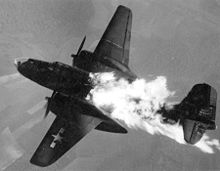
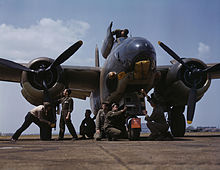
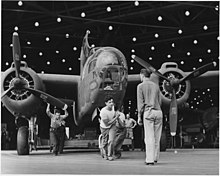

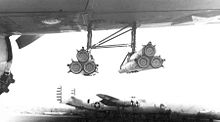
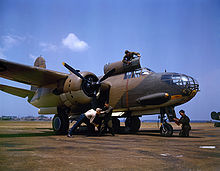



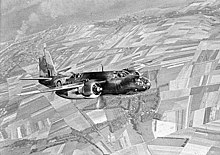
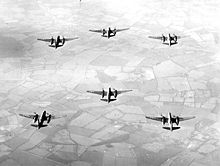
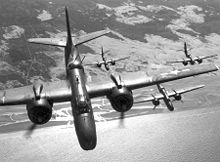

No comments:
Post a Comment